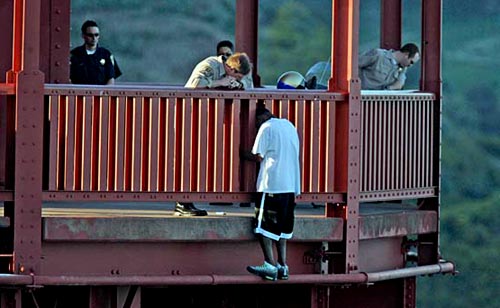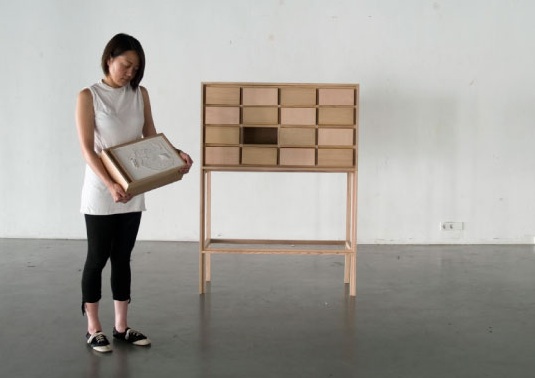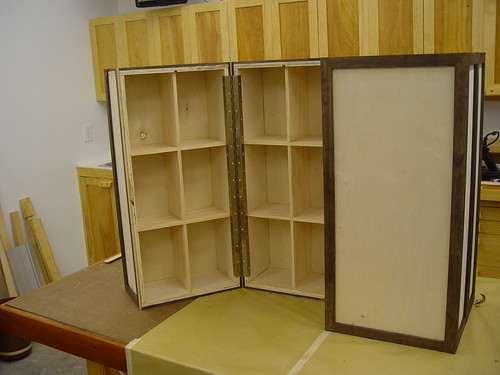As some may know, I have a morbid fascination with people jumping from the Golden Gate Bridge. I’ve had this fascination ever since I read “Don’t Jump!” in Salon back in 2001. There was just something about how everyone in that article was just so matter of fact. I think what really got me was the just how wonky it would get. I fascinated by the fact that most deaths are caused by the ribs shattering and puncturing major arteries, rather than drowning, and how ironically suicide jumpers are more likely to survive than people who fall accidently. Most alluring of the topic was that the bridge has about 25 jumpers a year – or as I like to think of it: on average, one every two weeks. (The frequency spikes over the holidays no doubt.)
Everyone, perhaps, thinks about what goes through the mind of the jumper as he falls. We laugh about how if it’s too far down, you have to take a breath to continue screaming before you hit. I on the other hand became enamored with the moment that the jumper’s center of gravity moves over the water, and the inevitable plunge begins. That moment, when your heart skips a beat, and your stomach tenses, and you think “Here we go!” It’s not the moment of total commitment. No, it’s the moment just after that. Did they intend to go just then, or were they just trying to get up the nerve when they slipped? More disturbingly, do they change their mind on the way down?
Of the people that survive the fall (and a rare few do), many do. The New Yorker had an interview with one survivor, Kevin Hines, who jumped, changed his mind, hit feet first, and then survived in September 2000.
Kevin Hines was eighteen when he took a municipal bus to the bridge one day in September, 2000. After treating himself to a last meal of Starbursts and Skittles, he paced back and forth and sobbed on the bridge walkway for half an hour. No one asked him what was wrong. A beautiful German tourist approached, handed him her camera, and asked him to take her picture, which he did. “€œI was like, ‘€˜Fuck this, nobody cares,’€™€” he told me. “€œSo I jumped.”€ But after he crossed the chord, he recalls, “€œMy first thought was What the hell did I just do? I don’€™t want to die.”
In 2005, film maker Eric Steel, created his controversial movie, The Bridge, which captures the fatal plunge of most of the 19 jumpers in 2004. I haven’t seen it.
Then finally, we get to the granddaddy of all articles. The SF Chronicle’s six-part series Lethal Beauty. A tour de force of Golden Gate Bridge jumping. Interviews, maps of jump sites (Notice how they’re biased towards the east side, where you get the more scenic view, and more practically, the pedestrian walkway is located. Also notice how it’s skewed towards the SF side and away from Marin. Apparently people don’t want to bother to walk far to their final act.
The bridge has been called, “the world’s top suicide magnet”. I am not surprised. It’s iconic, and accessible. Unlike jumping from the Empire State Building, or Taipei 101. What I do wonder about is how many people travel from outside the Bay Area simply to jump. Does anyone fly from the East Coast, simply to kill themselves? Maybe.
I’ve been wanting to write about this fascination for a while. Perhaps even after I read that first article some seven years ago. What prompted me to write it now was, this Metafilter post about the Army’s PTSD program. Who’s talking to soldiers about suicide? Jumper Kevin Hines







